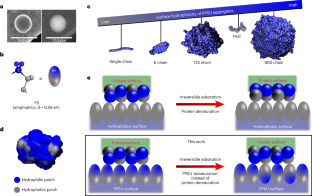2024-01-15 カリフォルニア大学バークレー校(UCB)
 A fossilized holdfast (top) with the axis (ax) where the stem, or stipe, would have attached. Arrows indicate the lobe-like meristematic transition zone (mtz) that divides into branching, finger-like haptera. At bottom is an X-ray reconstruction of the same 32-million-year-old fossil kelp holdfast colored to show the base (orange), holdfast (yellow) and the bivalve shell to which it attached (blue).
A fossilized holdfast (top) with the axis (ax) where the stem, or stipe, would have attached. Arrows indicate the lobe-like meristematic transition zone (mtz) that divides into branching, finger-like haptera. At bottom is an X-ray reconstruction of the same 32-million-year-old fossil kelp holdfast colored to show the base (orange), holdfast (yellow) and the bivalve shell to which it attached (blue).
Dula Parkinson, Berkeley Lab Advanced Light Source, and Tony Huynh, UC Berkeley
◆これらの沿岸ケルプの森は、現代の海洋生物の生息地となっており、その豊かな生態系は古代の絶滅した哺乳動物であるデスモスティリウスの主要な食物源であった可能性があります。発見は、ケルプの根のような部分であるホールドファストの新しい化石から得られ、これが32百万年前のものであることが確認されました。
<関連情報>
- https://news.berkeley.edu/2024/01/15/pacific-kelp-forests-are-far-older-than-we-thought
- https://www.pnas.org/doi/10.1073/pnas.2317054121
北太平洋における初期漸新統のコンブホールドファストとコンブ生態系の段階的進化 Early Oligocene kelp holdfasts and stepwise evolution of the kelp ecosystem in the North Pacific
Steffen Kiel, James L. Goedert, Tony L. Huynh, Michael Krings, Dula Parkinson, Rosemary Romero, and Cindy V. Looy
Proceedings of the National Academy of Sciences Published:January 16, 2024
DOI:https://doi.org/10.1073/pnas.2317054121
Significance
Molecular and morphological studies suggest that kelps—large, marine brown algae—originated around the Eocene–Oligocene transition about 34 Mya. This paper documents kelp holdfasts from earliest Oligocene strata in Washington State, USA, that provide evidence for these age estimates and the morphology of early kelps. The fossils also highlight the preservational potential of brown algal holdfasts, which likely exceeds that of the soft blades that constitute the hitherto known fossil record of kelps. Reviewing the fossil record in light of the data supports the view that kelp evolution in the North Pacific was stepwise and enabled by climatic changes.
Abstract
Kelp forests are highly productive and economically important ecosystems worldwide, especially in the North Pacific Ocean. However, current hypotheses for their evolutionary origins are reliant on a scant fossil record. Here, we report fossil hapteral kelp holdfasts from western Washington State, USA, indicating that kelp has existed in the northeastern Pacific Ocean since the earliest Oligocene. This is consistent with the proposed North Pacific origin of kelp associated with global cooling around the Eocene–Oligocene transition. These fossils also support the hypotheses that a hapteral holdfast, rather than a discoid holdfast, is the ancestral state in complex kelps and suggest that early kelps likely had a flexible rather than a stiff stipe. Early kelps were possibly grazed upon by mammals like desmostylians, but fossil evidence of the complex ecological interactions known from extant kelp forests is lacking. The fossil record further indicates that the present-day, multi-story kelp forest had developed at latest after the mid-Miocene climate optimum. In summary, the fossils signify a stepwise evolution of the kelp ecosystem in the North Pacific, likely enabled by changes in the ocean-climate system.


